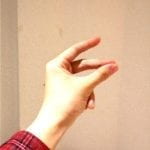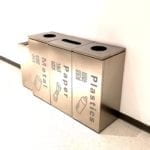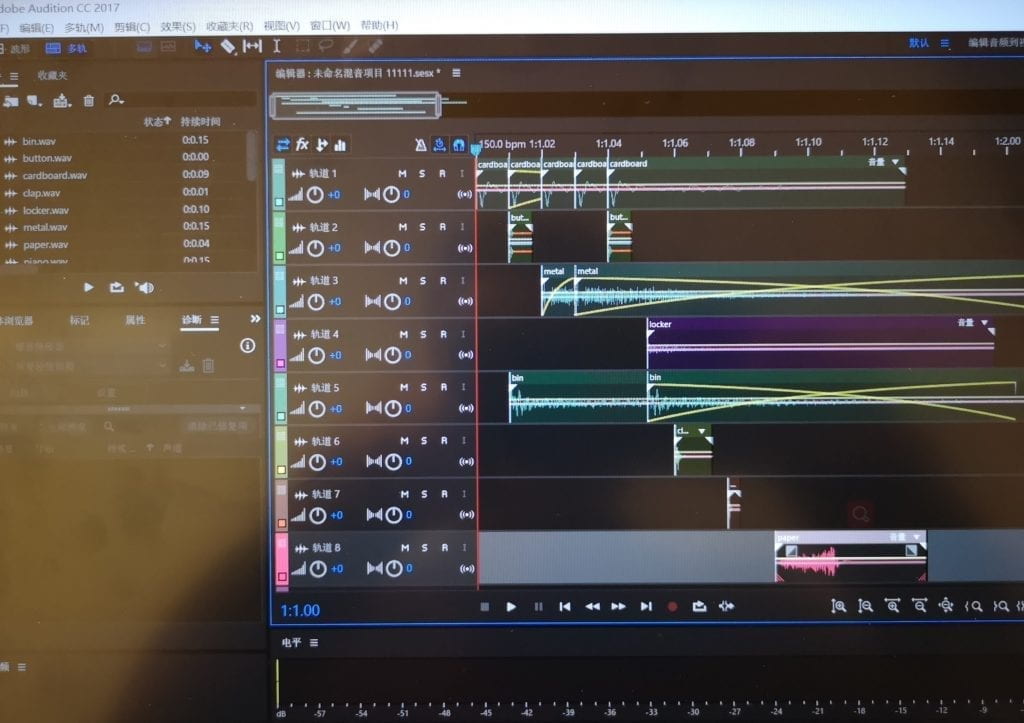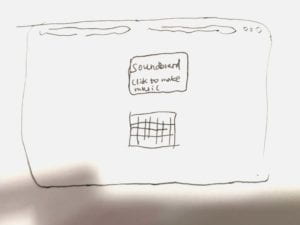Working link:
Video Project Proposal – Clover, Jamie, Nan
Project Philosophy
People tend to believe that the development of things results from multiple factors, including environmental actors, subjective choice from an individual, etc. People may believe that the result of one thing in front of us is generated from all these factors in a reasonable way.
However, when too many factors are mixed up and intertwined with each other, how can we make sure that the result we see is led to by an integrative action from all the factors that we are aware of, rather than – a random result that can be led to regardless of what factors are influencing it?
Things, therefore, may develop in a random fashion, and the result may not be led to, as what people imagine, by the factors that they are aware of. Then, what is the power that is determining this seemingly random result?
Project Idea
An opening scene:
When water drops on one joint of your fist, the direction of where the droplet would go may also have to do with many factors, as you are aware of: the inclination of your fist, the roughness of your pore, or the orientations of your fine hair. However, do they actually making the final destination of the water drop different?
Next scene: CONFIDENTIAL
Project format
An interactive website where there is a storyline that the user can make decisions on their own, and different decisions lead to some result.
Response to “The Danger of a Single Story” – Nan
I have a similar experience with Chimamanda’s being treated with stereotypes. I am from Shandong province where every man should be stereotypically tall and strong with masculinity, but the fact is that I don’t. I was often joked at because of my height, but I would rather accept these jokes as the first topic for me to chat with others from China that have stereotype on Shandong people. But what Chimamanda is talking about hints a much larger context of racism and regional discrimination. The literature creates an image of Africa to attract white men in the western world with an exotic perspective, and people would take it for granted that what the literature says about Africa is the true Africa, without considering the logic behind the capitalized cultural product.
More importantly, Chimamanda’s experience has many things to say to us who are the fresh hands in media production. The media provides the audience with a powerful tool to perceive information, thus what content to produce is an important thing to consider. As media producers, on the one hand, we need to record the objects that we want to produce with less bias and try to think in the objects’ shoes in order to take a proper angle to tell stories. On the other hand, media producers should also consider the powerfulness of the medium, and have less bias in the production process in what to say and what to cut. As the audience of media production, it is also a question for us to think about whether the story in the things we see is biased or not.
Audio Project Documentation – Nan & Justin
Project: A Sound Board with Elements Collected around the Campus
Partner: Justin
Link: http://imanas.shanghai.nyu.edu/~js9686/audio-project
Description:
In this project, I am in charge of the major portion of audio collecting and editing and a small portion of participation in the coding (on the instruction page). Justin is in charge of the main portion of coding, especially in the soundboard part. (Justin is so amazing!!)
I initially wanted to create two melody lines that represent the theme of Shanghai to accord with the beats that the soundboard creates out of the user’s choice, but failed. Reason: I cannot extract pure vocal in high resolution (with no original beats) from the existing songs. Then after this failed attempt, our idea gets converged that we could do a soundboard using the sound sources that are around us.
We collected sound around us collectively. Here are the 8 sources of sounds that we used:








Using these patterns from daily life, we created a series of percussion from treble to bass. We made them into a soundboard, with the message to convey that every sound around us can be musical.
Justin and I collected all the sound assets together, and I edited them to make them sound “instrumental.”
I used Adobe Audition to edit the sounds. Besides the basic effects like cropping, shrinking, noise canceling, I also adjusted the reverberation, humidity, and tone of the sounds that we collected. I arranged the paper snipping sound as the highest treble and the cardboard knocking sound as the lowest bass. To make sure the sound elements are harmonious when playing together in a random organization, I arranged all the edited elements into a multi-track file, and set a muted metronome at the tempo of 150 to hear the result. When meeting somewhere disharmonious, I would go back to the original sound wave and make some adjustments.

Justin was in charge of the coding of the soundboard, and he is super amazing.
Our first module looks like this:

User Testing Feedback:
Our code and assets were clearly illustrated on the webpage, but:
- We did not make it explicit that all the sounds are collected around us;
- People’ll click everywhere;
- Our initial design of tempo adjustment (insert a number) is not intuitive;
- The design is ugly.
Then we responded to these feedbacks on our website:
- added an instruction page and a button to illustrate our ideas and to lead the user;
- On the instruction page, we added subtitles and illustrations on sounds.
- We colored the illustrations in their borders according to the colors on the elements on the soundboard, and let the user be aware which sound from the soundboard belongs to the which object via color.
- expanded the soundboard to make it look good;
- re-designed the color pattern and the fonts on the webpage.
Problems I encountered during resolving the previous flaws:
Coding part: I coded the instructions – click the images to hear what they sound like. I initially want to do the mouse hover thing to trigger the sound play. I referred to “onmouseover” and “onmouseoff,” but they are not able to use in Chrome to autoplay media according to policy restraint. Solution: I used “onclick” instead to trigger the sound play.
Audio part: Successfully using the workflow I described above, I didn’t encounter some problem worth documenting.
Response to “the Ecstasy of Influence” – Jiannan Shi
Collage is everywhere: visuals, sounds, and text, and the collage itself made a new life for the collaged, creating various artistic movements that have been leading the twentieth and the twenty-first century. The subtitle of Lethem’s article, “a plagiarism,” pointed directly to the ethical perspective of collage.
Lethem provides me with a dilemma that is substantially used in the art field: what is the nature and the influence of “collage”? One the one hand, “any text is woven entirely with citations, references, echoes, cultural languages, which cut across it through and through in a vast stereophony” (68). Whether it is in the English or Chinese literature, using allusions is a prevalent and charming thing to rich the connotation of a piece of work. Meanwhile, the second-time use of some literature reclaims the value of that original piece. On the other hand, it is always questions to consider whether it is an ethical choice to do so, whether the value of arts can be commodified, what belongs to the human society and what belongs to the private sphere.
In the digital age when the copy-and-paste becomes easy, how should we treat the collaged elements? I think Lethem has given us a good example: contextualizing the original meaning and provenance of the work he used and give credit to the cited pieces at the end of the article, as what he has done at the pp. 70-71.